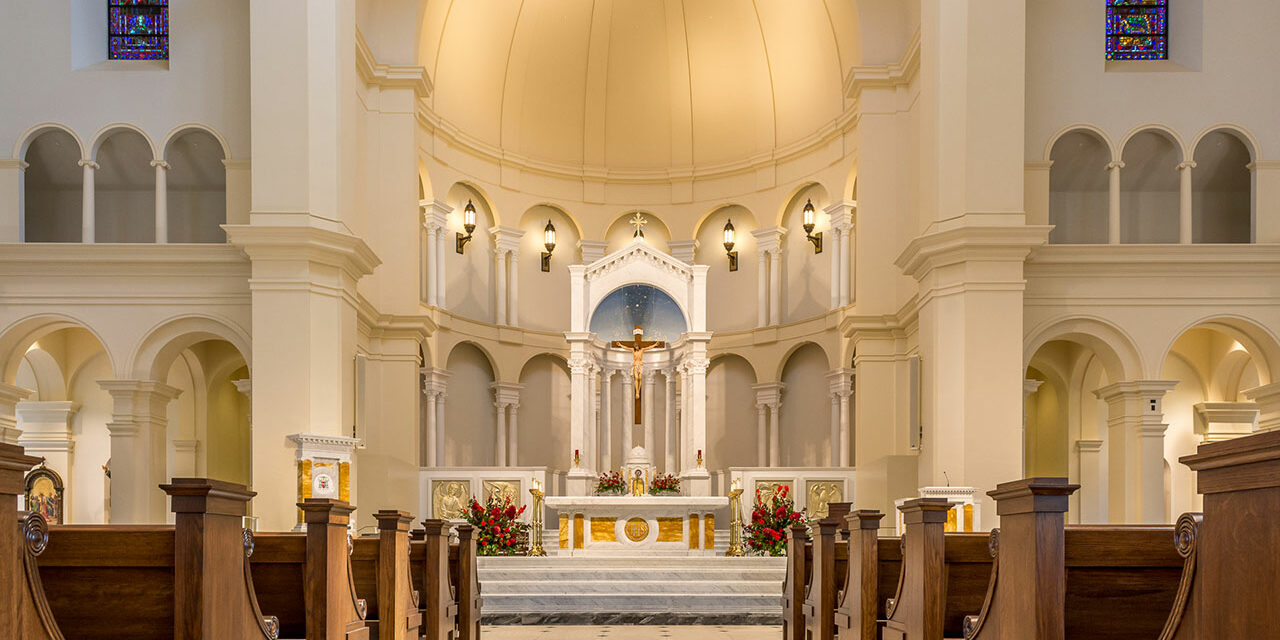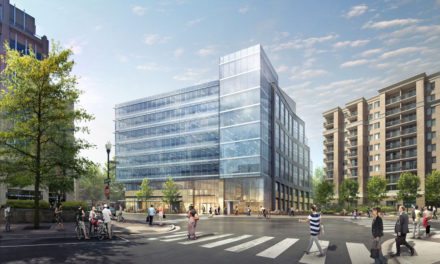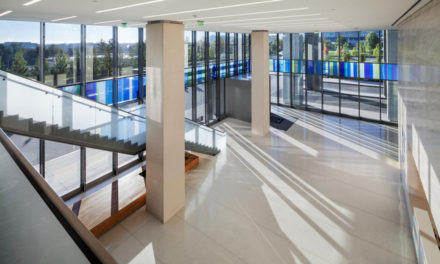The Holy Name of Jesus Cathedral in Raleigh, North Carolina, is a breathtaking display of modern interior design mixed with timeless appeal.
Formerly known as Sacred Heart Cathedral, it was initially the smallest cathedral in the United States, with limited seating for just over 300 patrons. Cathedrals differ from churches in that cathedrals are overseen by a bishop or other religious administrator. Although beautiful, Sacred Heart was inadequately sized for the parish’s purposes, with aisles overflowing with standing parishioners attending weekend masses.
In order to meet growing demands of its community, the Catholic Diocese of Raleigh sought a new location with more adequate accommodations for its members. The parish commissioned the help of design firm O’Brien & Keane and construction contractor Sears Contract, Inc. to help make this vision come to life.
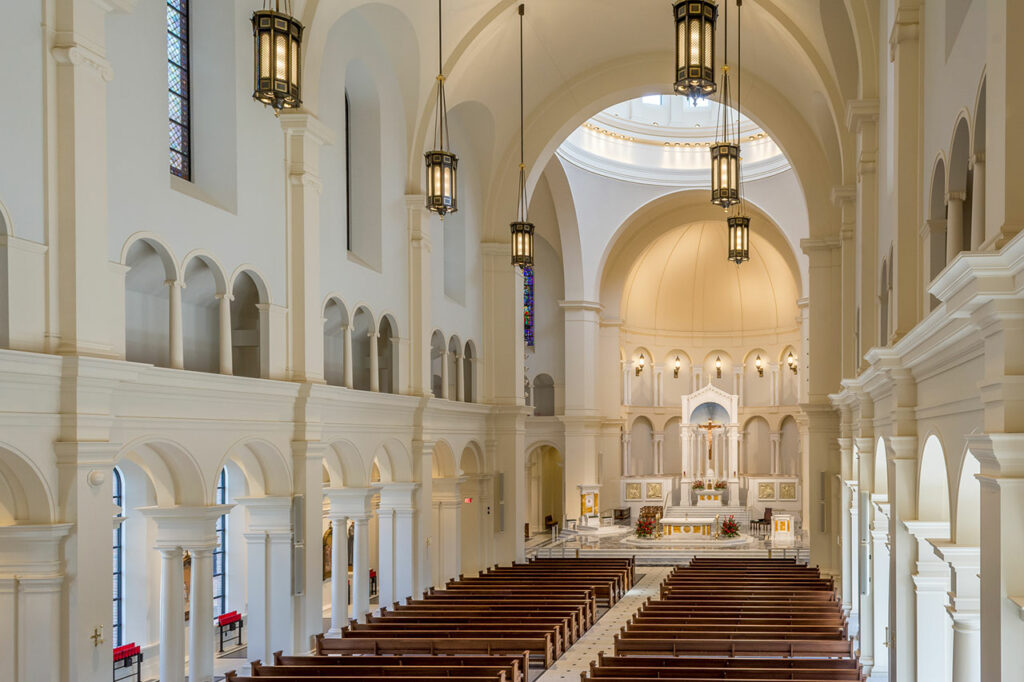
Photo credit: © Joseph K Fuller
The result was Holy Name of Jesus Cathedral, a new, sprawling project with a Romanesque-inspired design built with modern building materials. The building’s shape was based on the cruciform layout, which appears like a cross from an aerial view, a design established by Francesco di Giorgio Martini in the 1400s. The new cathedral design now accommodates seating for up to 2000 parishioners, making it one of the largest cathedrals in the region.
The Holy Name of Jesus Cathedrals’ interior features dozens of arches varying in style and radii, a dramatic aesthetic most commonly achieved through the use of labor-intensive plaster, and here expertly crafted by the Sears Contract team and made almost entirely from drywall. Accounting for these arched angles, the Sears Contract team heavily molded and contorted several layers of drywall boards to custom fit the cathedral’s many curved surfaces.
To achieve the look, Sears Contract selected CertainTeed Gypsum‘s drywall boards throughout the interior, applying a mix of Type X boards; its M2Tech moisture and mold resistant drywall, which is specially engineered to protect against mold growth; and Diamondback Tile Backer, a lighter, more efficient tile backer board to prep and prepare surfaces where tile is incorporated into the building’s interior design.
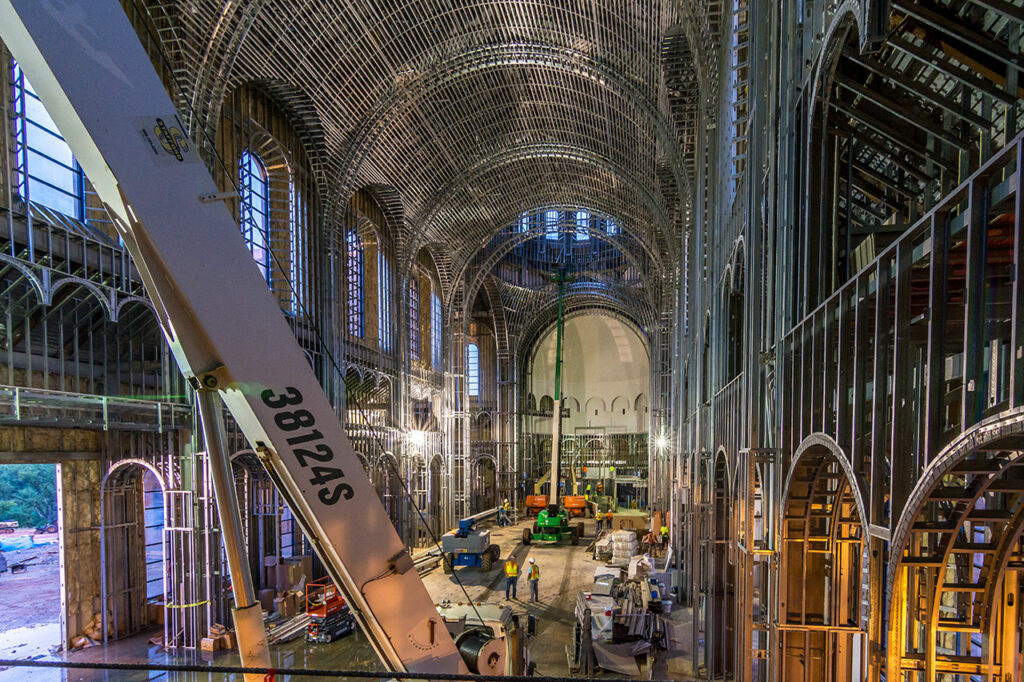
Photo credit: © Joseph K Fuller
The cathedral’s dome, apse and tabernacle all required a high degree of precision and detail, twisting and molding two layers of CertainTeed Gypsum wallboard to match the structural frame, which was first constructed on the ground and then lifted high into the ceilings’ curved surfaces to be fit and secured. The architecture also featured barrel-vaulted ceilings and splayed window returns, distinguishing this project from other cathedrals in the region. The drywall board was precut at the ribs on the ground then raised to the arch’s height, ranging from 52’ to 78’ feet in the air.
The project’s centerpiece was the cathedral’s dome, which lies at the heart of the cruciform and is over 140’ feet in the air, allowing natural light into the cathedral’s center. Made entirely of drywall, Sears Contract had to employ its most experienced contractors to make the dome a reality. Sears molded multiple layers of 3/8” and 1/4″ drywall boards together and constructed the dome in its entirety on the floor of the cathedral. From there, a crane carefully raised the dome to the top of the structure, where the contractors then applied it to the frame. The end result is a truly one-of-a-kind, majestic dome that perfectly accentuates the congregation’s new parish.
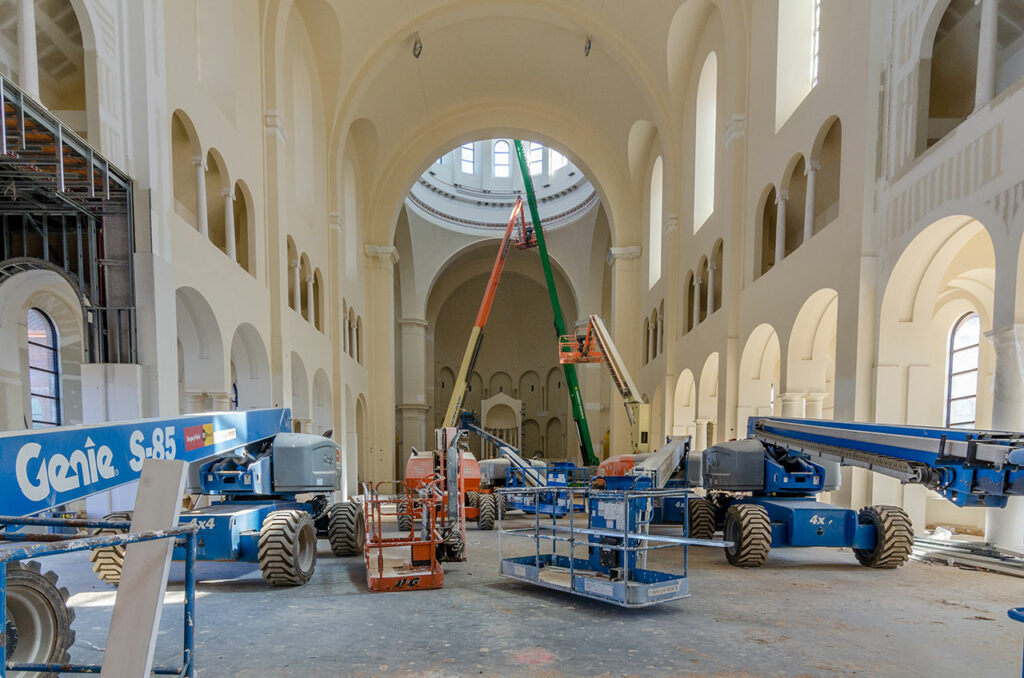
Photo credit: © Joseph K Fuller
Using CertainTeed Gypsum’s products, many of which have published Environmental Product Declarations (EPDs) and Health Product Declarations (HPDs), specifically Type X and M2Tech®, supported the project in meeting certain LEED criteria. The project also used CertainTeed’s products with GREENGUARD® certification, which is a stricter criteria that takes into consideration the safety factors for sensitive individuals, like children and the elderly.
Holy Name of Jesus Cathedral’s overall design is also environmentally conscious, with an abundance of natural light, locally sourced materials, energy-efficient lighting, heating and cooling systems, and design elements recycled from other churches, including stained glass from Ascension Church in Philadelphia.
Two and a half years in the making, the cathedral’s use of modern construction materials and building practices allowed it to be completed on time and within budget while providing a high level of performance, comfort and a grand aesthetic for the parishioners.
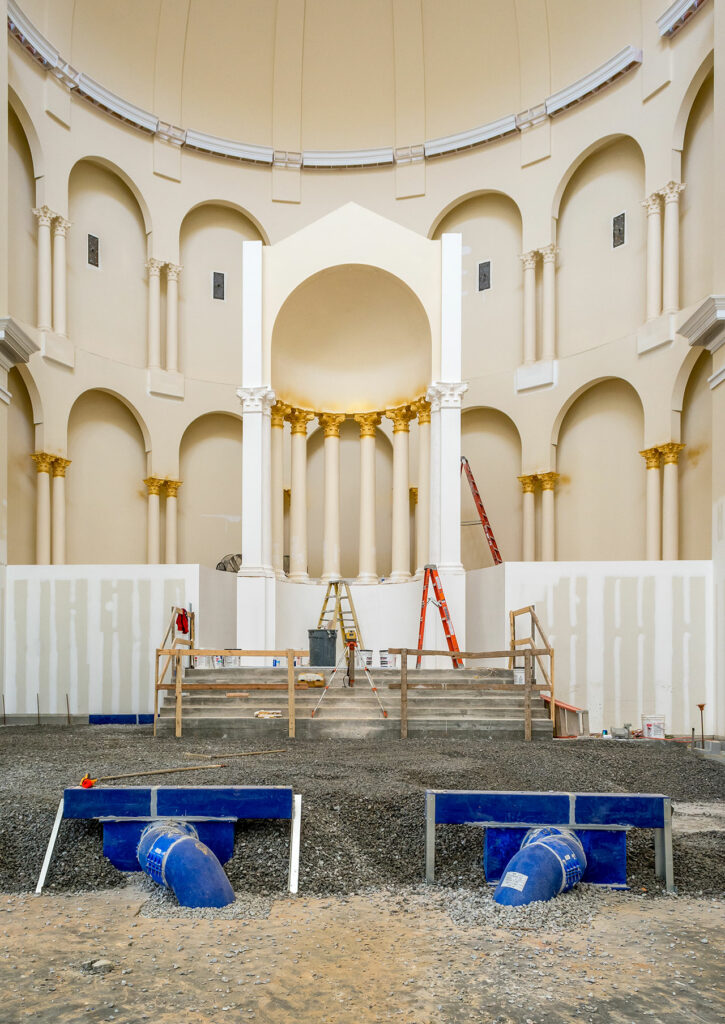
Photo credit: © Joseph K Fuller
The Holy Name of Jesus Cathedral project received recognition as a winner in CertainTeed Gypsum’s 4th Annual North American Trophy Awards. Held every two years, CertainTeed Gypsum’s Trophy Awards recognize projects and their contractors throughout the United States and Canada who are pushing the limits of construction and exemplify excellence in drywall design, installation and craftsmanship.
Nominations for CertainTeed Gypsum’s 5th annual Trophy Awards are currently closed, but the North American semi-finalists will be announced in July. Interested in learning more? Visit CertainTeed’s Trophy website for more information, including past award winners, like the Holy Name of Jesus Cathedral, and sign up for email updates on the current award cycle. Winners of CertainTeed’s North American Trophy Awards will be showcased on the international stage at Saint-Gobain’s International Trophy Awards in Athens, Greece in 2020.

